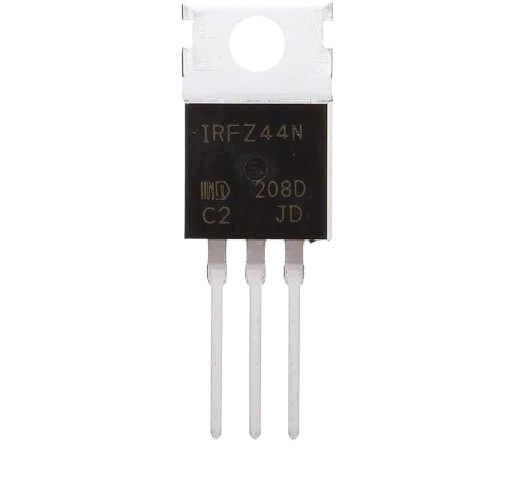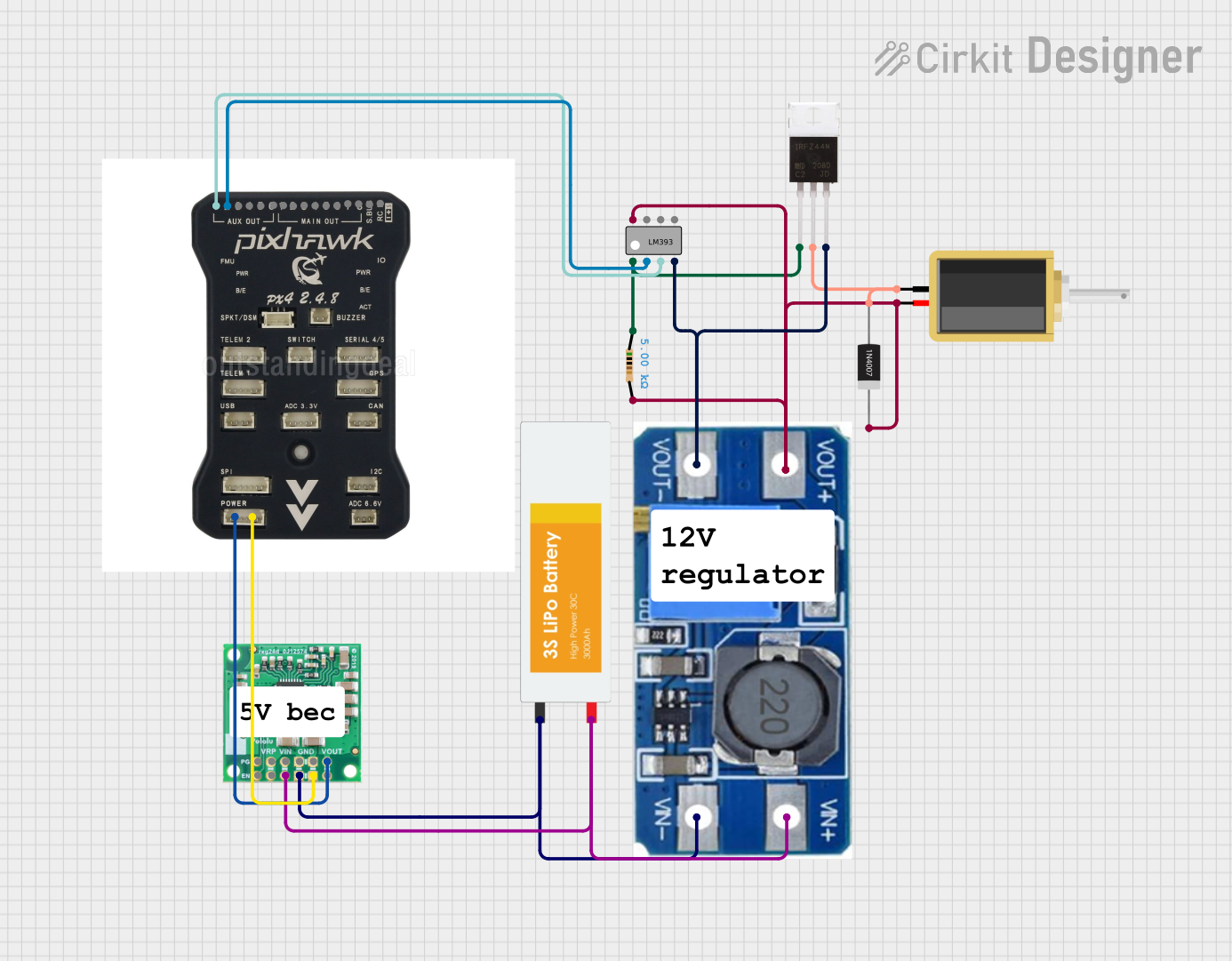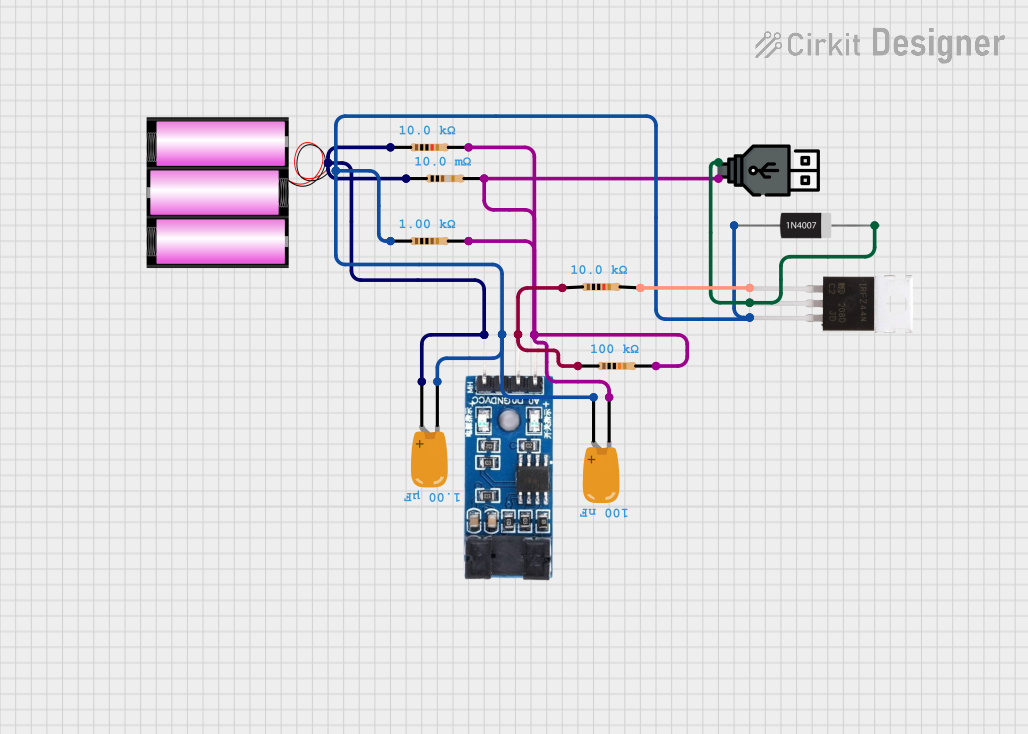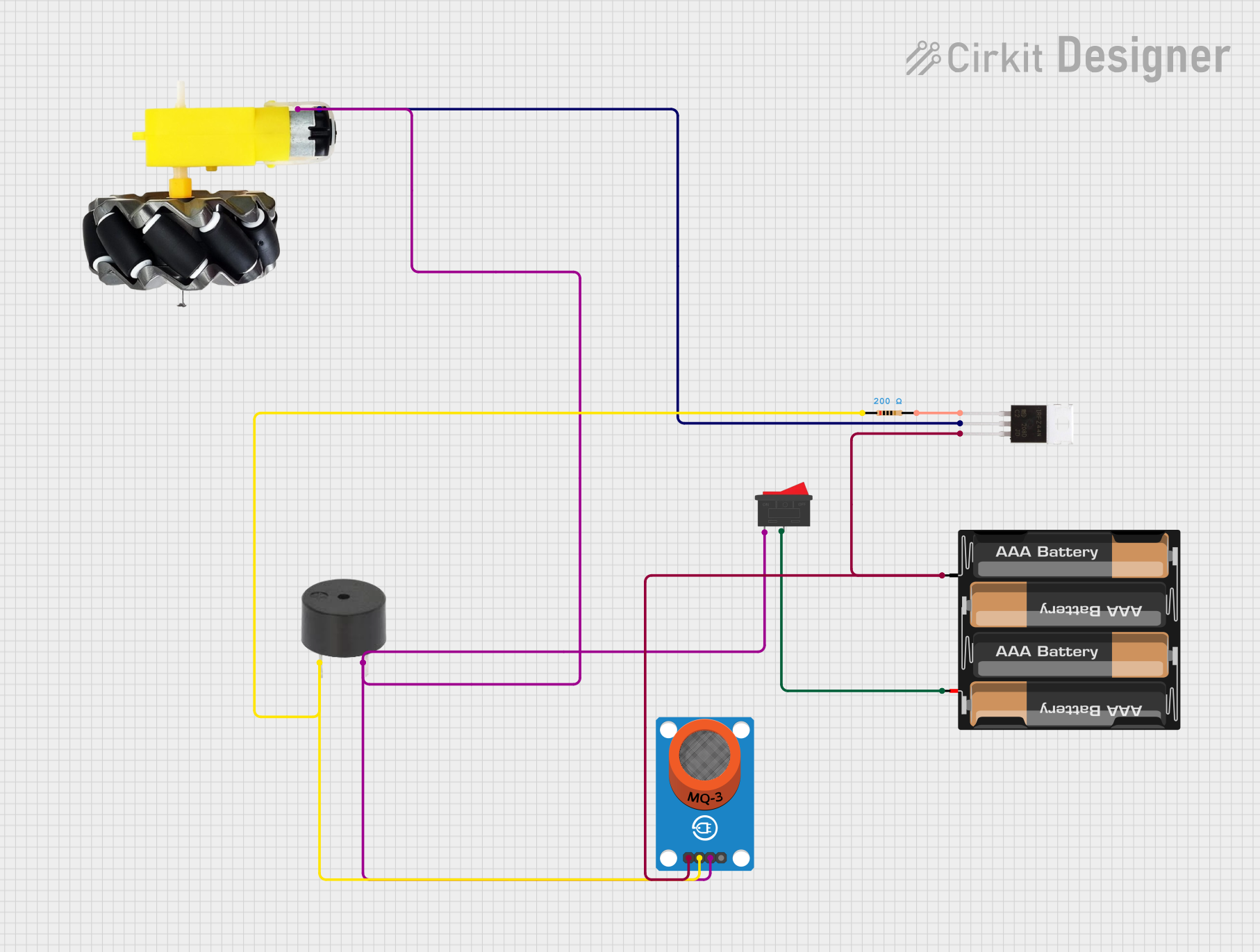
How to Use IRFZ44N: Examples, Pinouts, and Specs

 Design with IRFZ44N in Cirkit Designer
Design with IRFZ44N in Cirkit DesignerIntroduction
The IRFZ44N is an N-channel MOSFET (Metal-Oxide-Semiconductor Field-Effect Transistor) designed for high-speed switching applications. It is widely used in circuits requiring efficient power management, motor control, and switching operations. With its low on-resistance, high current capacity, and ability to handle voltages up to 55V, the IRFZ44N is a versatile and reliable component for various electronic projects.
Explore Projects Built with IRFZ44N

 Open Project in Cirkit Designer
Open Project in Cirkit Designer
 Open Project in Cirkit Designer
Open Project in Cirkit Designer
 Open Project in Cirkit Designer
Open Project in Cirkit Designer
 Open Project in Cirkit Designer
Open Project in Cirkit DesignerExplore Projects Built with IRFZ44N

 Open Project in Cirkit Designer
Open Project in Cirkit Designer
 Open Project in Cirkit Designer
Open Project in Cirkit Designer
 Open Project in Cirkit Designer
Open Project in Cirkit Designer
 Open Project in Cirkit Designer
Open Project in Cirkit DesignerCommon Applications
- DC motor control in robotics and automation
- Switching power supplies and converters
- LED dimming and lighting control
- Battery management systems
- High-speed switching in industrial equipment
Technical Specifications
Key Specifications
| Parameter | Value |
|---|---|
| Type | N-Channel MOSFET |
| Maximum Drain-Source Voltage (VDS) | 55V |
| Maximum Gate-Source Voltage (VGS) | ±20V |
| Continuous Drain Current (ID) | 49A (at 25°C) |
| Pulsed Drain Current (IDM) | 160A |
| Power Dissipation (PD) | 94W |
| On-Resistance (RDS(on)) | 17.5 mΩ (at VGS = 10V) |
| Gate Threshold Voltage (VGS(th)) | 2.0V - 4.0V |
| Operating Temperature Range | -55°C to +175°C |
| Package Type | TO-220 |
Pin Configuration
The IRFZ44N is housed in a TO-220 package with three pins. The pinout is as follows:
| Pin Number | Pin Name | Description |
|---|---|---|
| 1 | Gate | Controls the MOSFET switching state |
| 2 | Drain | Current flows from drain to source |
| 3 | Source | Connected to ground or load return |
Usage Instructions
How to Use the IRFZ44N in a Circuit
- Gate Control: Apply a voltage to the Gate (Pin 1) to control the MOSFET. A voltage of 10V is typically recommended for full switching.
- Drain-Source Connection: Connect the load between the Drain (Pin 2) and the positive supply voltage. The Source (Pin 3) is usually connected to ground.
- Gate Resistor: Use a resistor (e.g., 10Ω) between the Gate and the control signal to limit inrush current and prevent damage to the MOSFET.
- Flyback Diode: When driving inductive loads (e.g., motors), add a flyback diode across the load to protect the MOSFET from voltage spikes.
Example Circuit with Arduino UNO
The IRFZ44N can be used to control a DC motor with an Arduino UNO. Below is an example circuit and code:
Circuit Connections
- Gate (Pin 1): Connect to an Arduino digital pin (e.g., D9) through a 10Ω resistor.
- Drain (Pin 2): Connect to one terminal of the motor.
- Source (Pin 3): Connect to ground.
- Motor: Connect the other terminal to the positive supply voltage.
- Flyback Diode: Place a diode (e.g., 1N4007) across the motor terminals, with the cathode connected to the positive supply.
Arduino Code
// IRFZ44N MOSFET Motor Control Example
// This code demonstrates how to control a DC motor using PWM signals.
const int motorPin = 9; // Pin connected to the Gate of the IRFZ44N
void setup() {
pinMode(motorPin, OUTPUT); // Set the motor pin as an output
}
void loop() {
// Gradually increase motor speed
for (int speed = 0; speed <= 255; speed++) {
analogWrite(motorPin, speed); // Write PWM signal to the Gate
delay(10); // Small delay for smooth acceleration
}
// Gradually decrease motor speed
for (int speed = 255; speed >= 0; speed--) {
analogWrite(motorPin, speed); // Write PWM signal to the Gate
delay(10); // Small delay for smooth deceleration
}
}
Important Considerations
- Ensure the Gate-Source voltage (VGS) does not exceed ±20V to avoid damaging the MOSFET.
- Use a heatsink if the MOSFET is expected to handle high currents to prevent overheating.
- Verify the power dissipation and ensure it is within the specified limits (94W max).
Troubleshooting and FAQs
Common Issues and Solutions
MOSFET Not Switching Properly
- Cause: Insufficient Gate voltage.
- Solution: Ensure the Gate voltage is at least 10V for full switching.
Overheating
- Cause: High current or inadequate cooling.
- Solution: Use a heatsink and ensure proper ventilation.
Motor Not Running
- Cause: Incorrect wiring or damaged MOSFET.
- Solution: Double-check connections and test the MOSFET with a multimeter.
Voltage Spikes
- Cause: Inductive load without a flyback diode.
- Solution: Add a flyback diode across the load.
FAQs
Q: Can the IRFZ44N be used with 3.3V logic?
A: The IRFZ44N requires a Gate voltage of at least 10V for full switching. For 3.3V logic, consider using a logic-level MOSFET like the IRLZ44N.
Q: What is the maximum current the IRFZ44N can handle?
A: The IRFZ44N can handle up to 49A continuously at 25°C, but proper cooling is required to avoid overheating.
Q: Do I need a resistor on the Gate?
A: Yes, a resistor (e.g., 10Ω) is recommended to limit inrush current and protect the MOSFET.
Q: Can I use the IRFZ44N for AC loads?
A: The IRFZ44N is designed for DC applications. For AC loads, consider using a TRIAC or other suitable components.